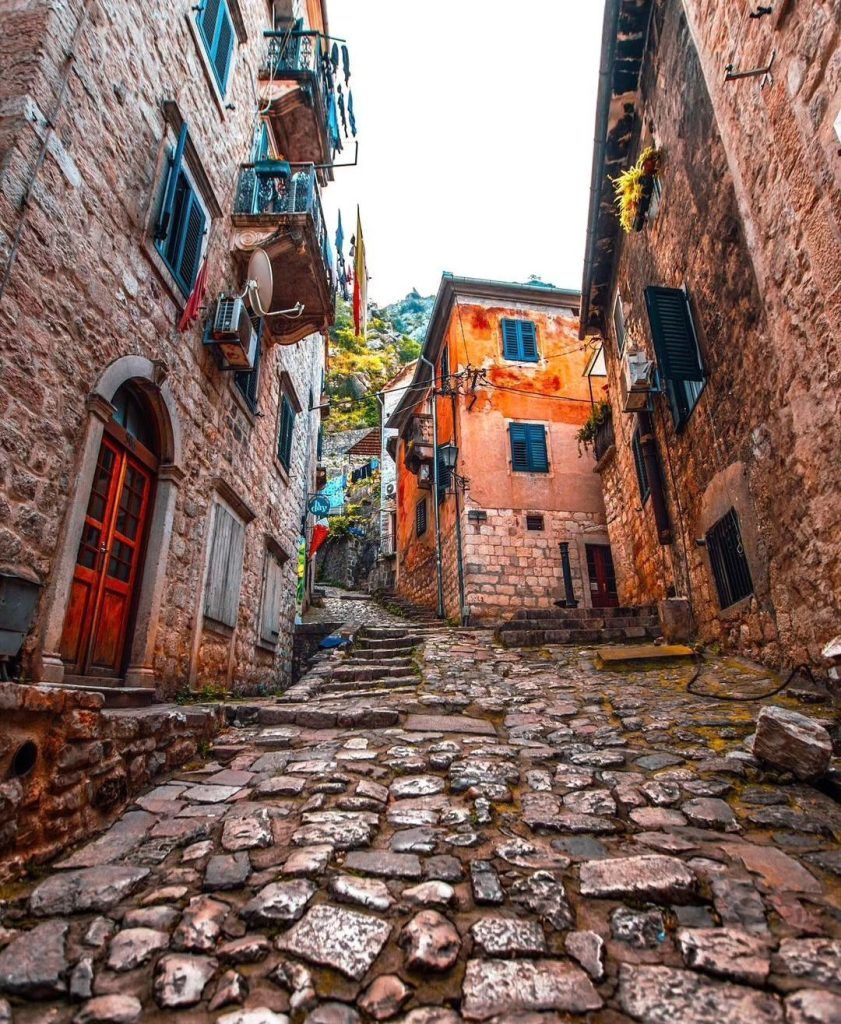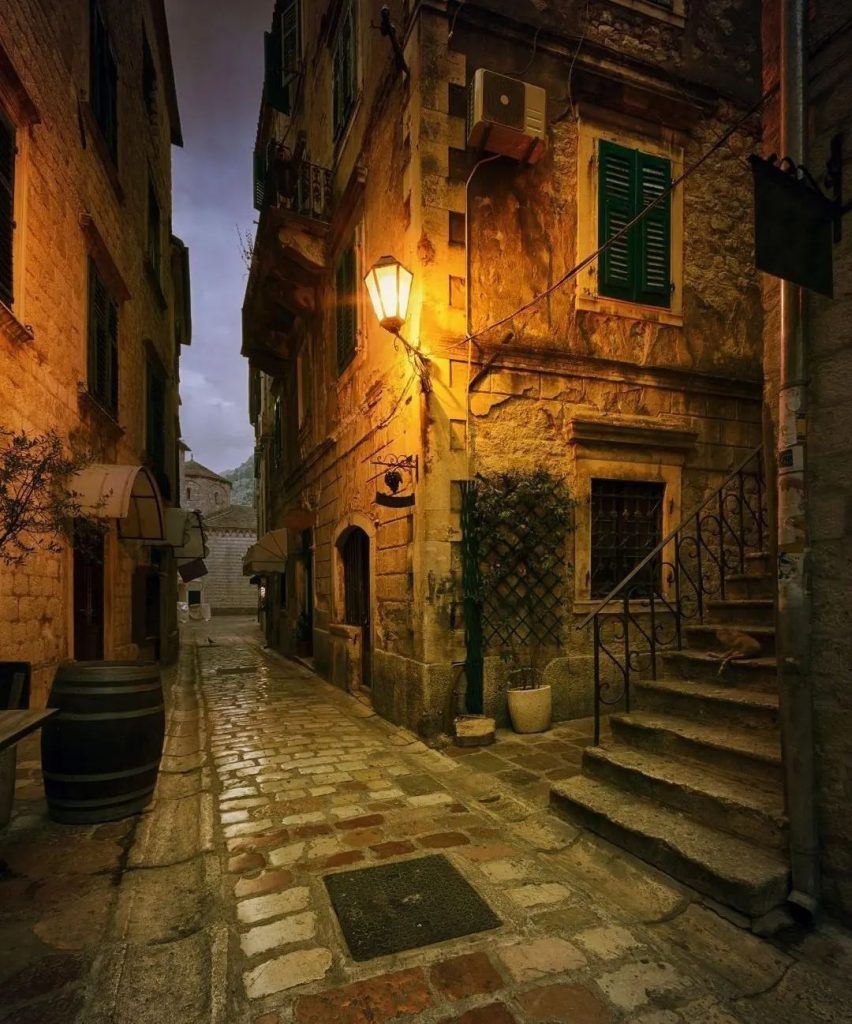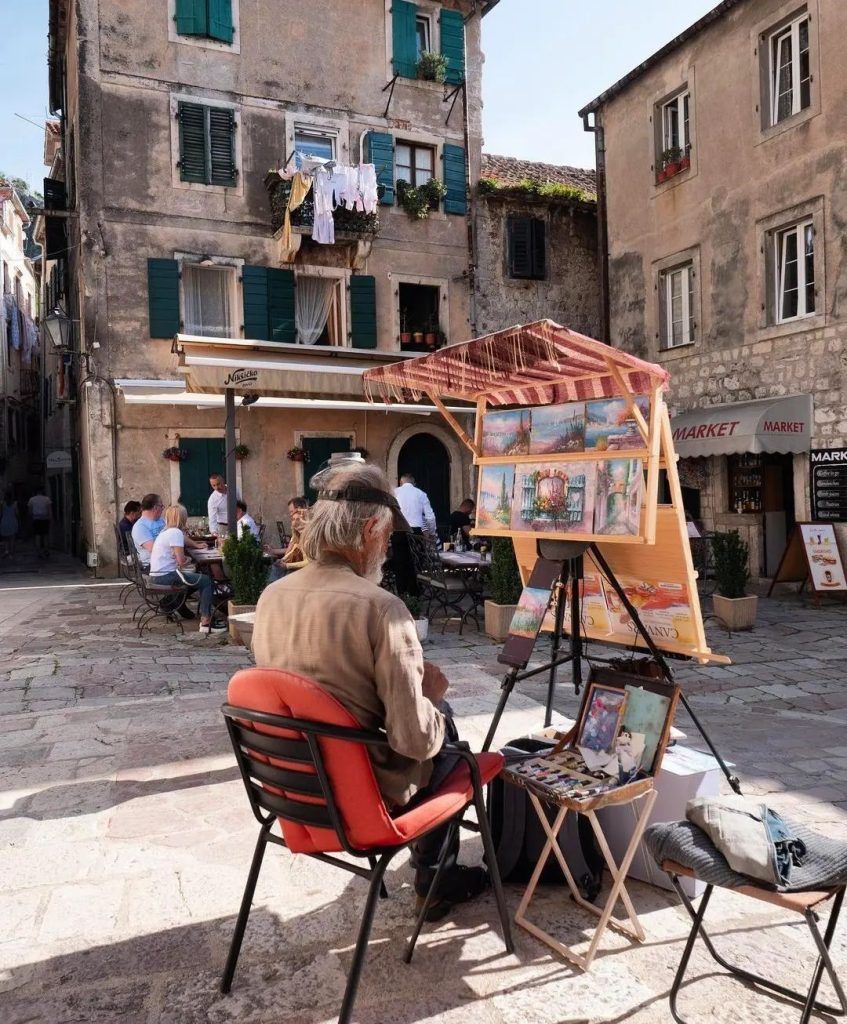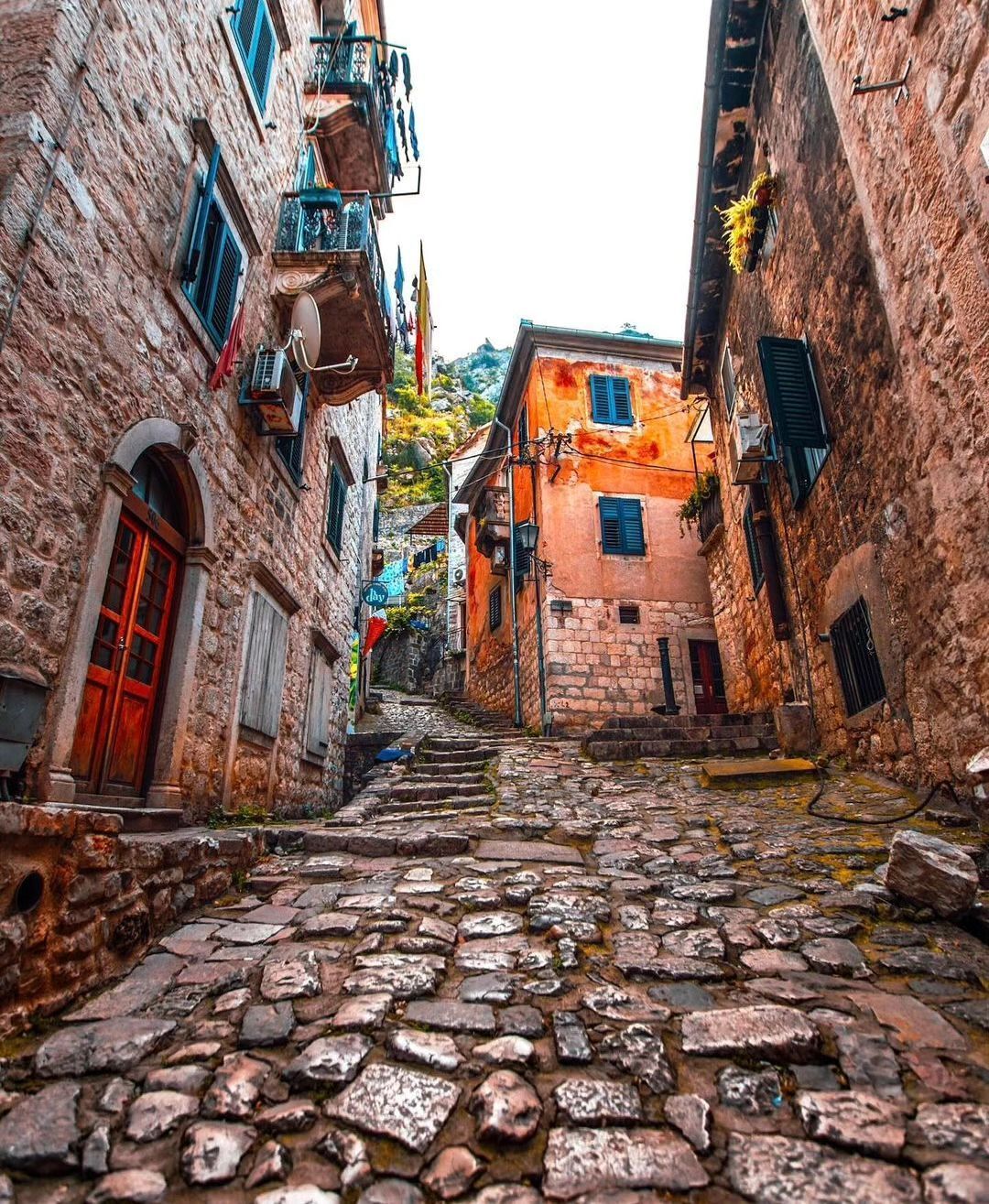My Adventure in Kotor
My journey to Kotor began on a sunny morning as I stepped into this enchanting Montenegrin town. Nestled at the edge of the dramatic Bay of Kotor, it felt like stepping back in time.
The ancient walls that encircle the old town whispered tales of bygone eras, inviting me to explore deeper. I was drawn to the labyrinth of narrow streets, each turn revealing quaint squares, historic buildings, and the serene harmony of a place untouched by time.
As I wandered, the blend of architectural styles fascinated me. Venetian palaces stood proudly next to Byzantine churches, each structure a testament to Kotor’s rich tapestry of history.
The locals, warm and welcoming, shared stories of their heritage with pride. It was clear that Kotor was not just a town but a living museum, where every stone and every wall had a story to tell.

The heart of Kotor, I discovered, was its St. Tryphon Cathedral. Standing tall since the 12th century, it showcased remarkable Romanesque architecture.
The treasures within—frescoes, silver saintly relics, and a sense of divine tranquility—left me in awe. This cathedral was not just a place of worship but a beacon of Kotor’s enduring spirit.
Venturing further, I reached the Maritime Museum, housed in a grand baroque palace. The museum’s collection narrated the seafaring prowess of Kotor’s inhabitants through centuries.
Models of old ships, maritime charts, and navigational instruments painted a vivid picture of life tied to the sea. It was a reminder of how the bay’s waters have shaped the destiny of this town.
As the day waned, I climbed the fortifications that snake up the mountain behind Kotor. The ascent was steep, each step a journey through history, leading to the Fortress of St. John. At the summit, the view was breathtaking.
The Bay of Kotor lay spread out below, a mosaic of blue waters, green hills, and the red roofs of the old town. It was a moment of profound connection with the natural beauty and historical depth of this magical place.
Kotor had captivated me completely. Its blend of history, culture, and stunning natural beauty was unlike anything I had experienced. As I looked out over the bay, I knew this was just the beginning of my adventure in this remarkable part of the world.
This introduction to Kotor marks the start of a deeper exploration into its history, natural wonders, and cultural heritage. The stories of Kotor are as vast as the bay itself, waiting to be discovered by those who seek to uncover the layers of time.
How to Get There
To get to Kotor from Spain, I’ve found there are no direct flights. Typically, I fly to a nearby airport and then take a bus or taxi to Kotor.
My usual options include:
Tivat Airport (TIV): Just 9 km from Kotor. I find direct flights from cities like Barcelona, Madrid, Málaga, and Valencia.
Dubrovnik Airport (DBV): Located in Croatia, about 45 km from Kotor. I fly directly from various Spanish cities.
Podgorica Airport (TGD): Montenegro’s capital, about 90 km from Kotor. There are direct flights from Madrid and Barcelona.
From these airports, I have two main options:
Bus: Buses well connect these airports with Kotor, costing between 10 € and 20 €.
Taxi: It’s fast and convenient, though more expensive. From Tivat to Kotor, it costs me about 25 €.
I also consider renting a car. From Tivat, the journey takes about 15 minutes; from Dubrovnik, 45 minutes; and from Podgorica, 90 minutes.
Regarding accommodation in Kotor, I explore three options for different budgets:
Budget: I stay at the Hostel Old Town Kotor. It’s central, with a friendly atmosphere and affordable prices, around 20 € per night in a shared room.
Mid-range: I choose Hotel Cattaro. A 3-star close to the bay, with comfortable rooms and good service, for about 100 € a night.
Luxury: I opt for Aman Sveti Stefan. A 5-star on a private island, with spectacular views and exceptional service, for about 500 € a night.
These are just a few of the many options available in Kotor, from hotels to apartments and guest houses.
My tips for choosing accommodation in Kotor are:
Budget: There are accommodations for all wallets.
Location: I decide based on whether I prefer to be in the old town, close to the bay, or in a quiet area.
Facilities: I look for what I need, such as Wi-Fi, a pool, or air conditioning.
Reviews: I always read what other travelers have to say before booking.

Discovering the History of Kotor
The historical tapestry of Kotor is as intricate as the stonework on its ancient buildings. My journey into the past began with the city’s fortifications, a UNESCO World Heritage site. These impressive walls, stretching over 4 kilometers, have protected Kotor since the Middle Ages.
As I walked along them, I could almost hear the echoes of soldiers’ footsteps, guarding against invaders. The fortifications not only served as a military defense but also symbolized the city’s resilience through centuries of changing rulers—from the Byzantines to the Venetians.
Kotor’s strategic position along maritime routes made it a coveted jewel for empires and a thriving trading center in the Adriatic. This prosperity is reflected in the grandeur of the buildings within the old town.
The Pima and Buca palaces, with their ornate facades, speak of a time when noble families ruled and wealth flowed into the city from across the seas.
Walking through the narrow alleys, I felt a deep sense of connection to those who walked these paths before me, merchants, sailors, and artisans who shaped the city’s destiny.
The Square of Arms, the main gathering place, was where the community’s heart beat strongest. Here, public life unfolded, from markets to festivals, echoing the city’s vibrant social life across ages. The square is flanked by the Clock Tower, a symbol of Kotor’s enduring spirit, and the Town Hall, a reminder of its administrative importance.
Religious architecture in Kotor tells its own story of faith and artistry. The Church of St. Luke, dating back to the 12th century, stands as a testament to the city’s religious tolerance, having served both Catholic and Orthodox communities. Its dual altars speak to a coexistence that has been a hallmark of Kotor’s history.

Delving deeper, I explored the ruins of the ancient Roman city of Risan, a short drive from Kotor. The remnants of Roman villas with exquisite mosaics offered a glimpse into the daily lives of its inhabitants, connecting me to the distant past of the region.
This exploration of Kotor’s history revealed a city shaped by the ebb and flow of empires, a place where art, culture, and commerce intertwined. The past is alive in Kotor, not just in its monuments and museums, but in the stories of resilience, creativity, and unity that have defined this remarkable city through the ages.
The historical journey through Kotor is a narrative of human endeavor, a chronicle of survival and prosperity in the face of challenges. It’s a story that invites us to reflect on our own place in the continuum of time, inspiring us to preserve and cherish the legacy of our shared heritage.
The Bay of Kotor: A Natural Spectacle
As my exploration of Kotor’s history came to a close, my attention turned to its natural wonders, particularly the Bay of Kotor. Often referred to as Europe’s southernmost fjord, this ria (a submerged river canyon) is a spectacle of natural beauty that leaves every visitor in awe.
Its serpentine shape, flanked by towering limestone cliffs, creates a dramatic and captivating landscape that changes with the light of day, from the soft glow of dawn to the fiery hues of sunset.
Venturing out onto the bay by boat, the water mirrored the sky, a vast expanse of blue that stretched into the horizon. The gentle lapping of waves against the hull provided a rhythmic backdrop to my thoughts. Each island and waterfront village we passed told its own tale of life by the water.
The islands of Our Lady of the Rocks and St. George, each with their own history and legends, were particularly mesmerizing.
Our Lady of the Rocks, with its charming church and museum, is a testament to the mariners’ devotion, its origin story as fascinating as the artifacts it houses.
The bay’s natural beauty is not just confined to its waters. The surrounding area is a lush tapestry of Mediterranean flora, with olive groves, cypress trees, and wildflowers. Hiking trails wind up the hills, offering panoramic views that take your breath away.
The Lovcen National Park, a beacon of Montenegro’s rugged beauty, presents a stark contrast to the serene waters of the bay. Its majestic peaks and deep valleys speak of the geological forces that shaped this land over millennia.
The biodiversity of the Bay of Kotor is equally impressive. The waters and wetlands are a haven for birds and marine life, underscoring the importance of conservation efforts to protect these ecosystems.
Observing the interplay of species, from fish darting in the clear waters to birds soaring above, I was reminded of the delicate balance that sustains life in this unique environment.
As my journey around the Bay of Kotor came to an end, I was left with a profound sense of wonder. The natural beauty of the bay, combined with the rich tapestry of history and culture, creates a unique destination that speaks to the heart of every traveler.
It’s a place where nature and humanity have coexisted for centuries, shaping a landscape that is both breathtaking and humbling.
Kotor and its bay are more than just a destination; they are a reminder of the beauty and resilience of our natural world. The experiences here invite us to pause and reflect on our own connection to nature, urging us to protect and cherish these wonders for generations to come.
My journey through Kotor has been an adventure of discovery, not just of this remarkable place but also of the stories and lessons it holds. It’s a journey that I will carry with me, a memory etched in the beauty of the Bay of Kotor.

